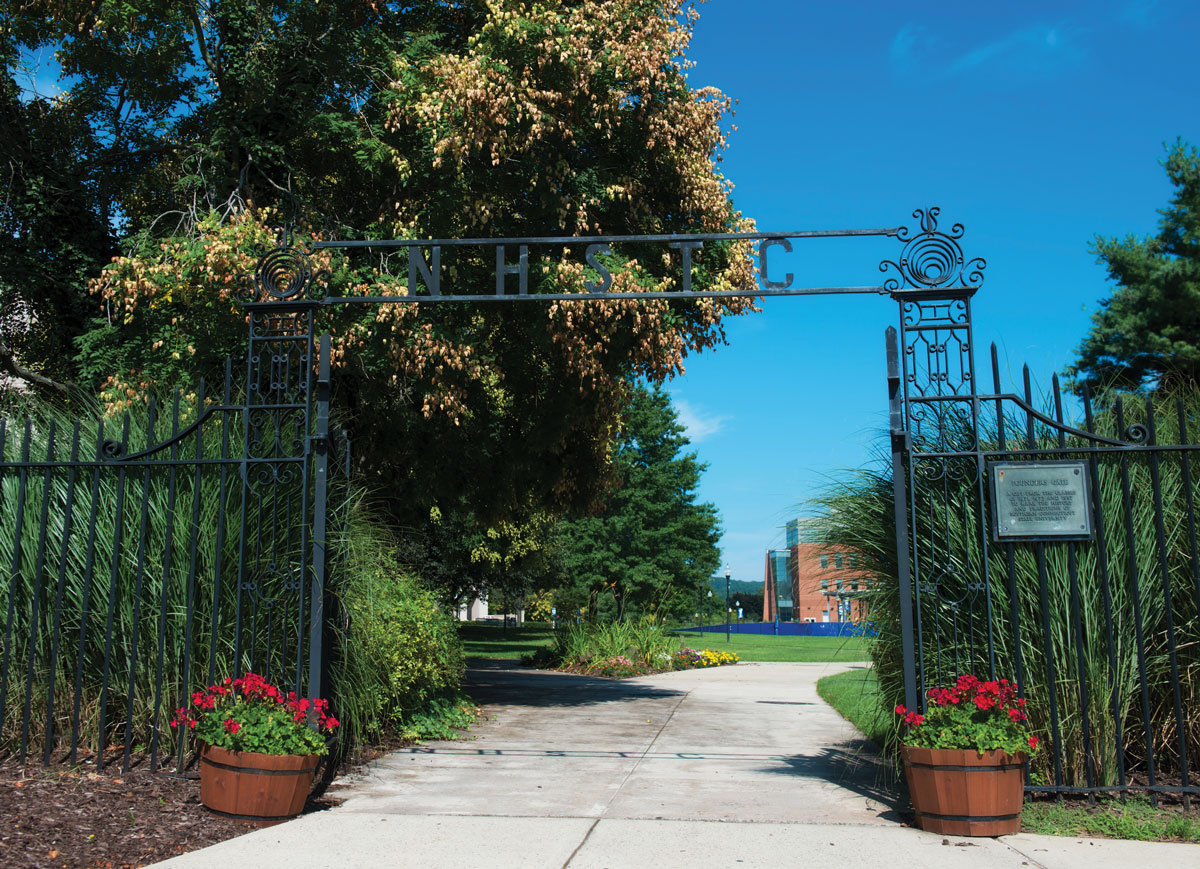An important link to Southern’s past, Founders Gate was previously located on the Howe Street campus and now stands between Lyman Center and Engleman Hall.
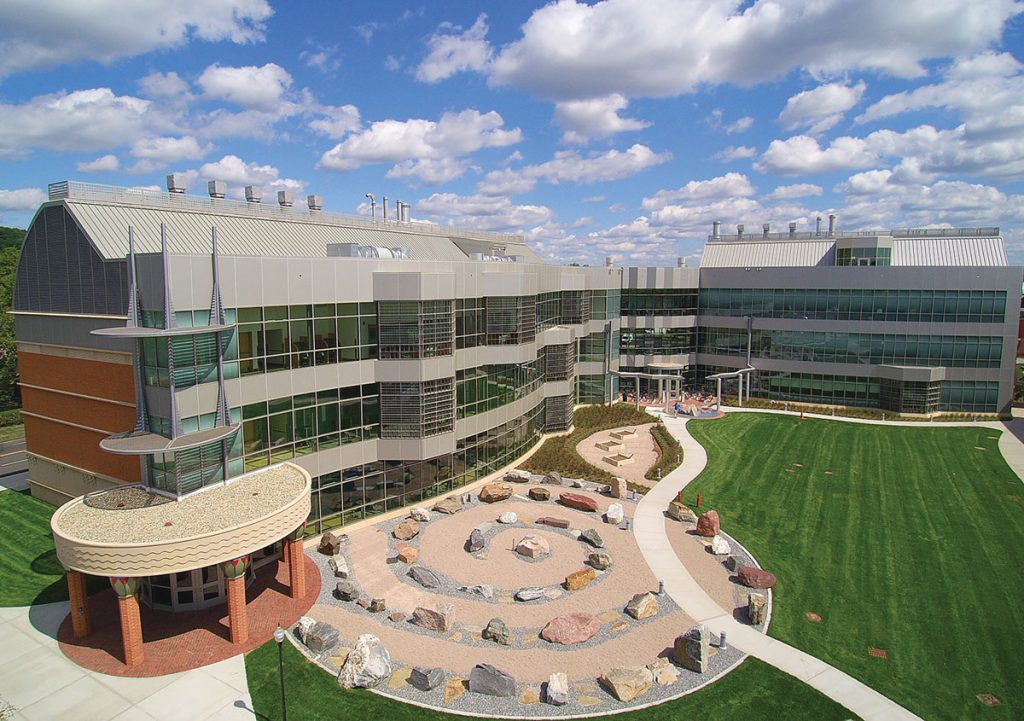
Located outside of the Academic Science and Laboratory Building, the Geological Rock Garden includes 52 rocks that are indigenous to Connecticut. Numerous quarry operators in the area donated boulders for the display, which was created with the aid of Thomas Fleming, professor of earth science. Some of the boulders are from Stony Creek Quarry, which provided stone for many iconic buildings and monuments — including the base of the Statue of Liberty, Grand Central Station, and the Smithsonian Institution.
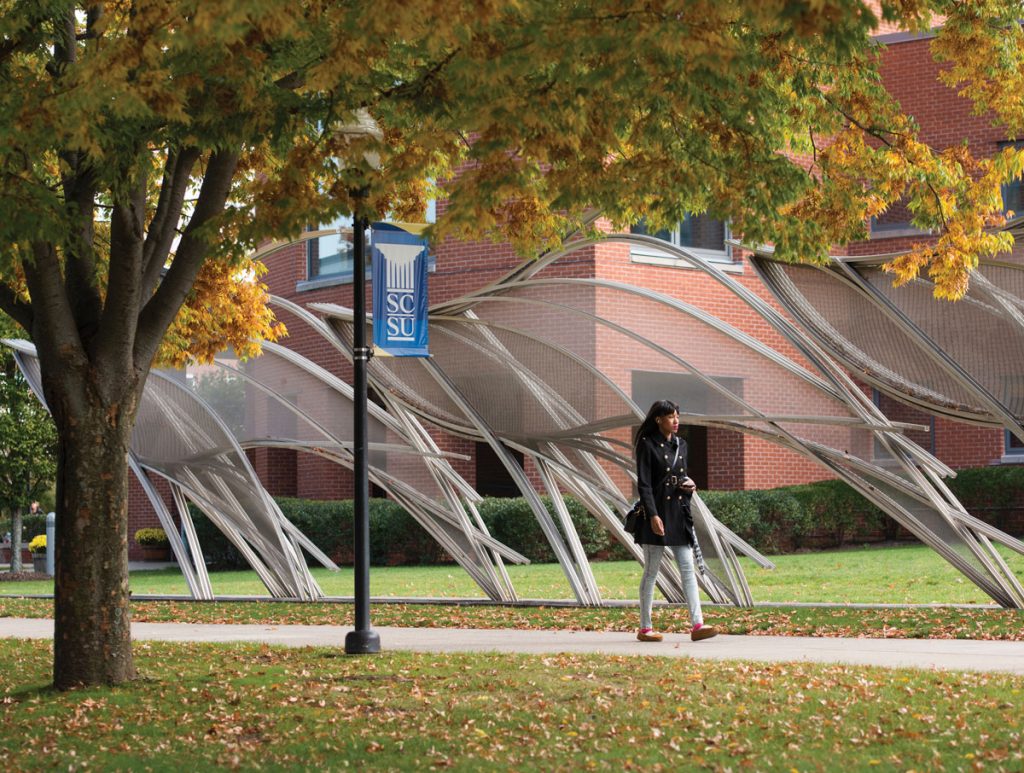
Set along a path outside of Engleman Hall, the stainless steel sculpture, “H20: Liquid Zone,” was designed by award-winning international landscape architect Mikyoung Kim. Rain, snow, and ice collect on the sculpture, changing the view on an ongoing basis. The artist’s stunning portfolio also includes the Crown Sky Garden in Chicago, the roof garden of the John Hancock Tower in Boston, and the ChonGae Canal Restoration Project in Seoul, Korea.
Commissioned through Connecticut’s Art in Public Spaces Program
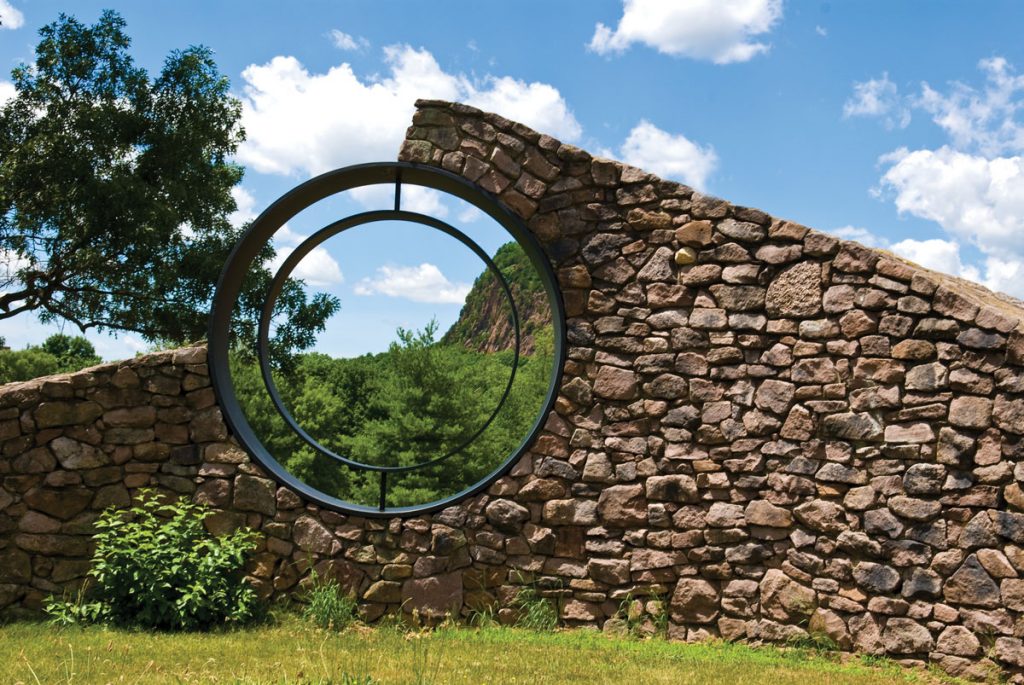
West Rock can be viewed in a whole new light courtesy of the environmental sculpture, “End of the Line/West Rock,” which was installed in 1985 on the Farnham Avenue-side of Brownell Hall. The sculpture was designed by the late Nancy Holt, a pioneer of the land-art movement, which began in the late 1960s in response to growing awareness of environmental issues and debates about what constituted “real” art. In this work, two rings frame views of West Rock, showcasing the geological formation as an art object.
Commissioned through Connecticut’s Art in Public Spaces Program
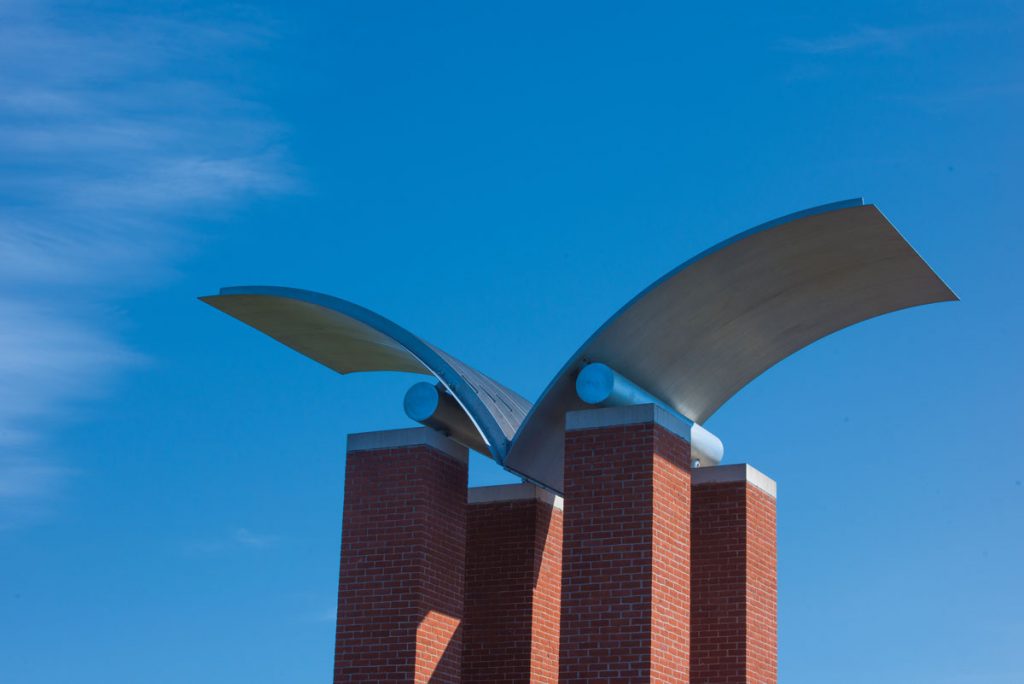
Is it an owl’s outstretched wings, an open book evoking the quest for knowledge, or, perhaps, both? Perched on top of Engleman Hall, this sculpture can be seen throughout much of Southern’s campus.
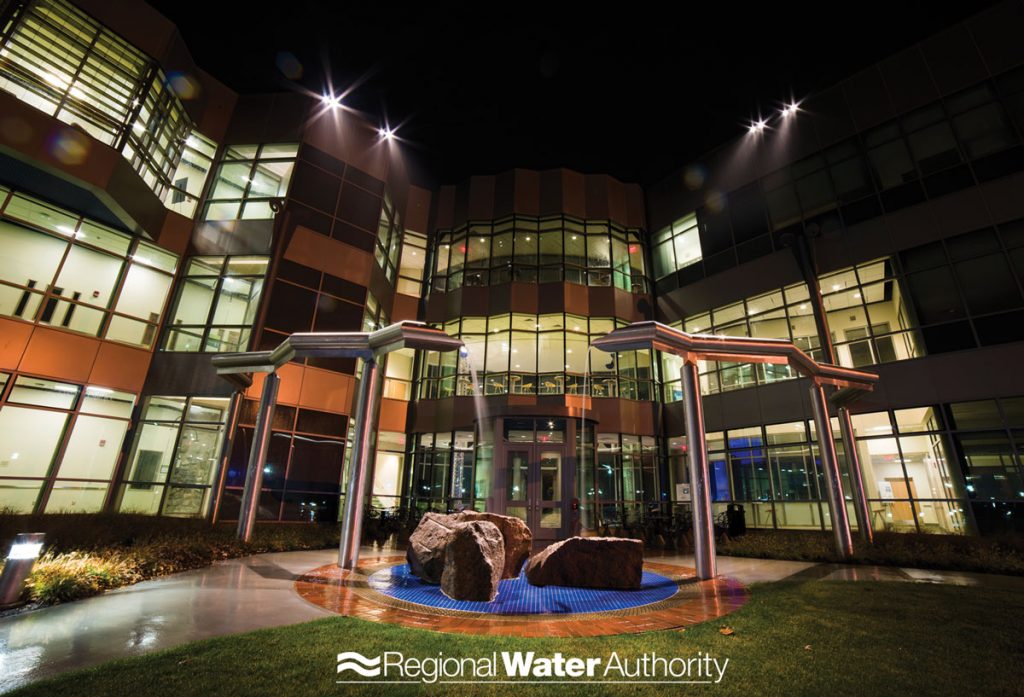
Every cloud has a silver lining, and, on campus, it’s the rain harvester located outside of the Academic Science and Laboratory Building. Named in recognition of the South Central Connecticut Regional Water Authority for the organization’s leadership-level support, the rain harvester is ecologically sound as well as beautiful. Water drains into a 40,000-gallon underground collection system that is used to water surrounding greenery — reducing the need for irrigation of the area by 50 percent. An ultraviolet-purification system eliminates bacteria.
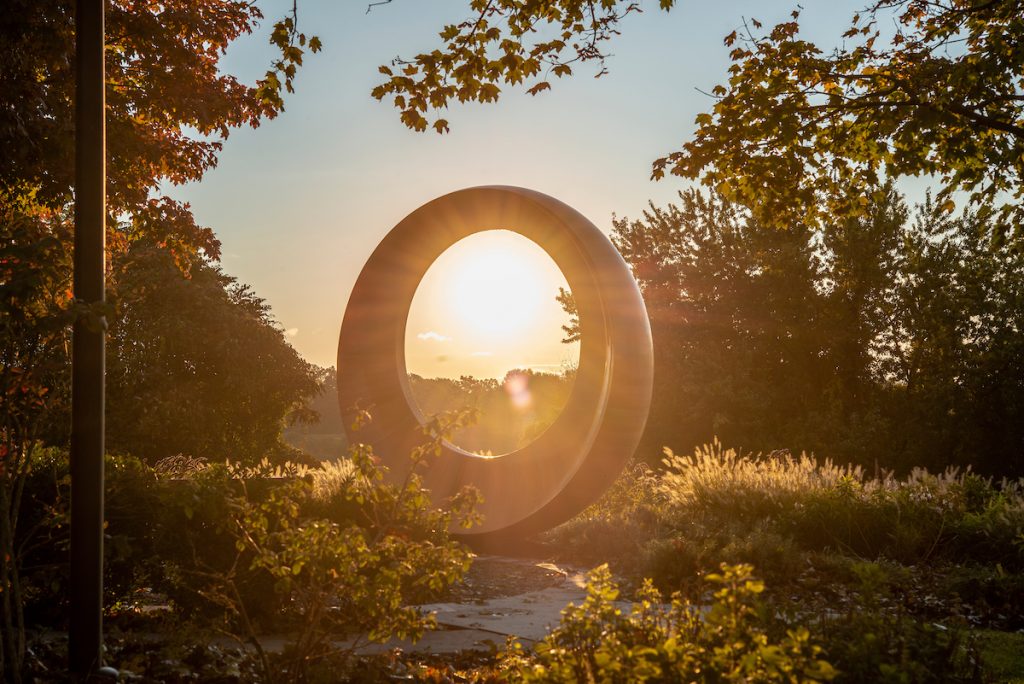
The SCSU Sandy Hook Alumnae Remembrance Garden — located behind Jennings Hall — honors four educators and Southern alumni who were killed during the tragedy at the Connecticut elementary school on Dec. 14, 2012: Principal Dawn Lafferty Hochsprung, M.S. ’97, 6th Yr. ’98; Teacher Anne Marie Murphy, M.S. ’08; School Counselor Mary J. Sherlach, M.S. ’90, 6th Yr. ’92; and Teacher Victoria “Vicki” Leigh Soto, M.S.’13, who was pursuing a master’s degree at the time of the shooting and was awarded her degree posthumously. The sculpture reflects the vision of Carlene Barnes, ’13, who won a design competition while attending Southern. Rita A. Landino, ’64, provided significant philanthropic support for the project, building on her 35-year legacy at the university, first as an English professor and later as a counselor. Many others also helped make this project possible through pro bono service, contribution of materials, and philanthropic support.
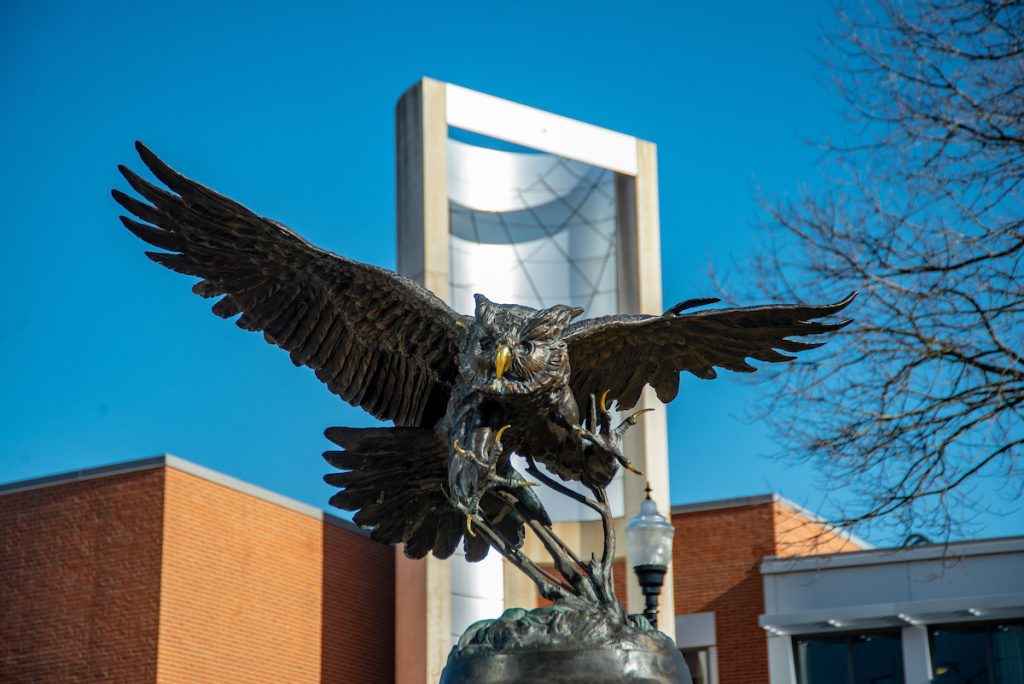
Among the newest additions to campus is this five-foot wide bronze sculpture installed outside of Engleman Hall in 2018.
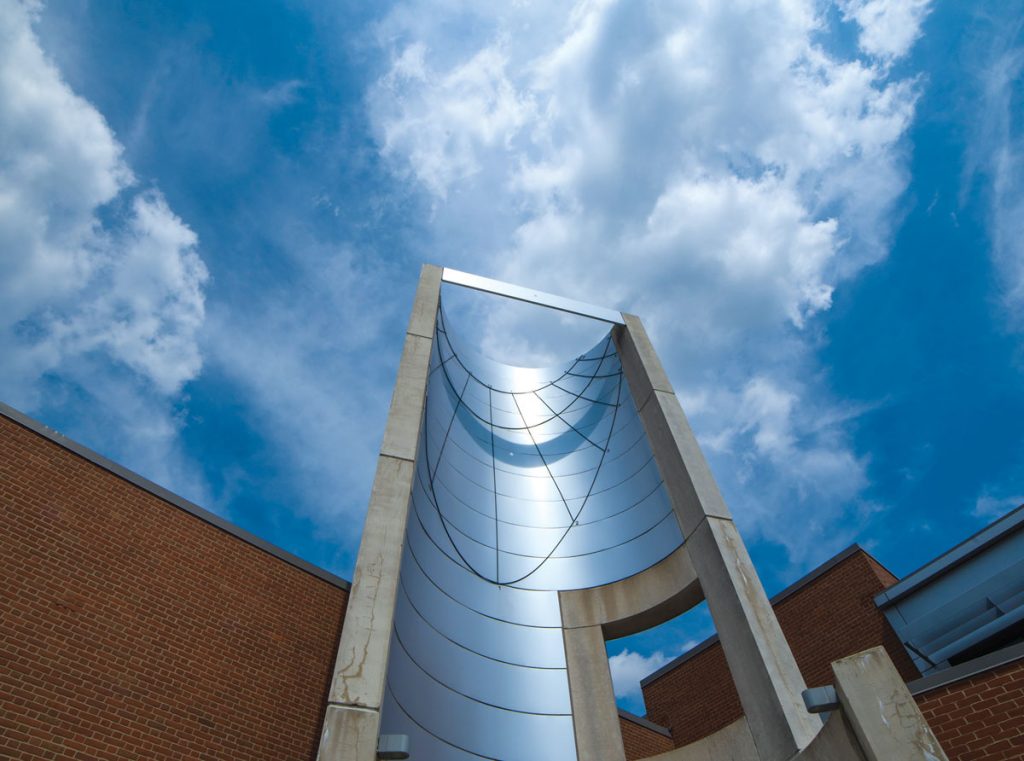
Rising nearly 50 feet, the Engleman Hall tower sundial built in 2005 is an award winner. The Connecticut chapter of the American Institute of Architects named it the top design in the art/architecture category in 2006. The project’s architects are Howard Hebel (Herbert Newman & Partners) and Frederick Sawyer, who is a co-founder of the North American Sundial Society.
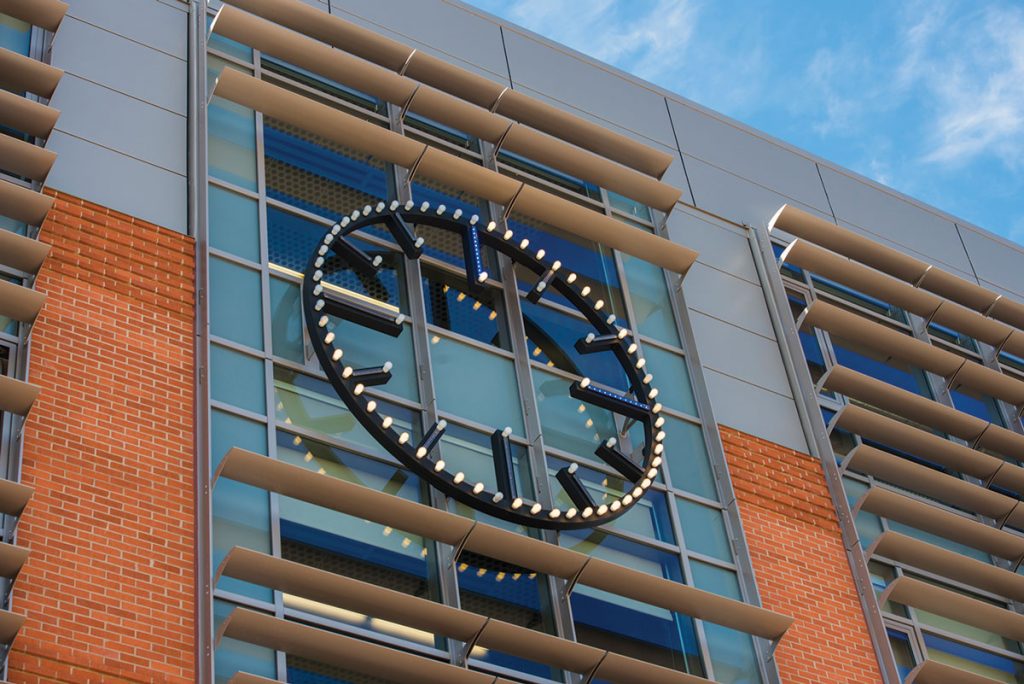
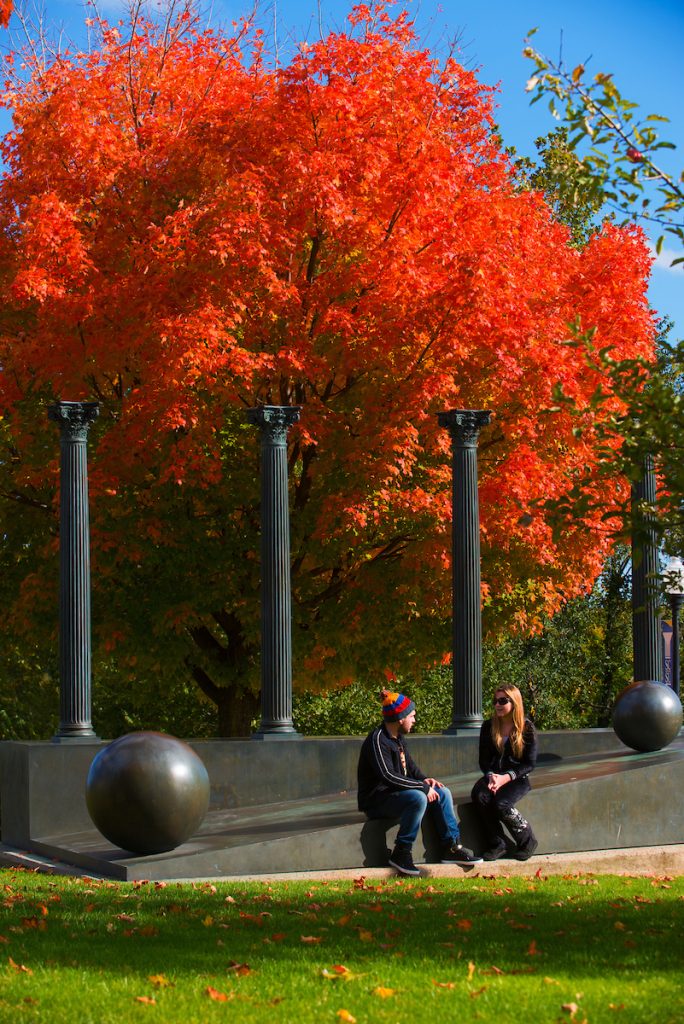
Set on a hill overlooking the campus pond, the bronze sculpture, “Serie Metafisica XVIII,” was created by Herk Van Tongeren and installed on campus in 1983. In 1987 the New York Times fittingly described the late sculptor’s work: “The walls, columns, and steps of the theaters were mysterious and incomplete. They suggested Greek and Roman theaters, but it was unclear who would take their place on stage and what roles they would assume.”
Commissioned through Connecticut’s Art in Public Spaces Program

